More late winter viewing, part two
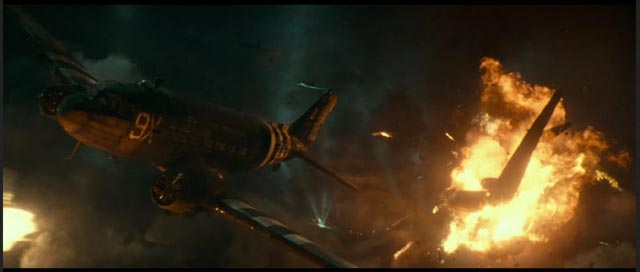
In my last post, I covered several movies released theatrically between 1968 and 1974 and on disk between 2009 and 2018. Here, I’ll cover a half-dozen newer movies – one released in 2009, seemingly direct to disk apart from a few niche festival screenings, one released theatrically in 2017 and on disk in 2018, the rest all released in 2018. For the most part, I think I was overall more entertained by the older movies.
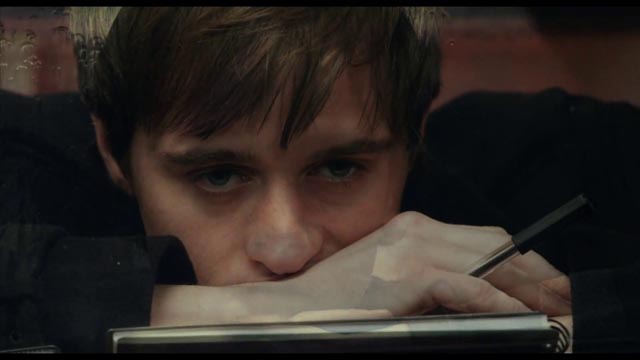
Book of Blood (John Harrison, 2009)
My only previous encounter with the work of John Harrison, who was once George Romero’s assistant director, was his awful mini-series adaptation of Frank Herbert’s Dune (2000), so I hadn’t previously had much interest in checking out his Clive Barker adaptation, Book of Blood (aka Clive Barker’s Book of Blood, 2009). But after writing about Rawhead Rex and Candyman a couple of weeks ago, I decided to check it out just to see how yet another director tackled Barker’s very distinctive approach to horror.
Apparently intended to launch an ambitious project to film many more stories from Barker’s six-volume Books of Blood, Harrison’s movie is based on the brief prologue and epilogue of the collection, “The Book of Blood” and “On Jerusalem Street”. Since these are not fully developed stories, but rather a frame intended to establish the author’s overall philosophy of horror and narrative – something akin to Ray Bradbury’s framing of the stories in The Illustrated Man (published in 1951) – they merely establish a character on whose body the dead have inscribed their terrible tales; positing an intersection between the worlds of the living and the dead, they also establish the inextricable entwining of the visceral and the spiritual.
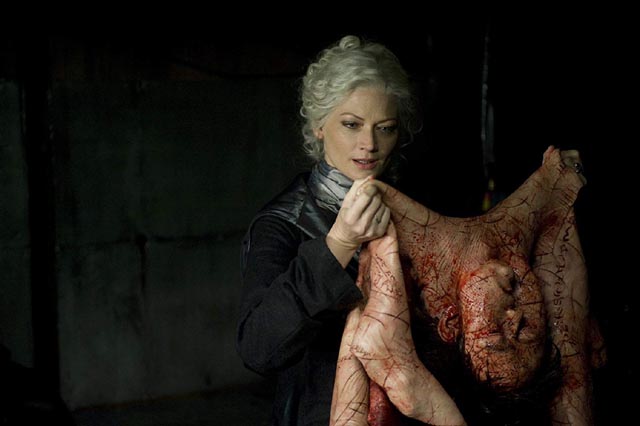
Although Harrison and co-writer Darin Silverman include most of what occurs in these brief narrative fragments, turning them into a movie necessitated some kind of expansion. That expansion adheres closely to Barker’s original, but in fleshing things out, the movie becomes more ordinary. This has the interesting effect of illuminating the central paradox of Barker’s work: how he is able to take the familiar – the cliches of genre – and make it disturbingly strange and unfamiliar. In the brief framing narrative of the Books of Blood he skips over the mechanics of plot, the details which comprise rather a lot of other similar stories, and concentrates on an underlying essence which those other stories often merely imply.
Harrison’s Book of Blood returns to that too familiar surface, the reiterated details of a story about a psychic researcher using various modern methods (video and audio recording) to prove the reality of a haunting. We’ve seen this before in Robert Wise’s The Haunting, John Hough’s The Legend of Hell House, Nigel Kneale’s The Stone Tape, Lesley Manning’s Ghost Watch – but the originality of those films is lost here because, paradoxically, the elaboration of Barker’s compressed narrative dilutes the essence he was able to distill from familiar elements, returning the story to the ordinary. Where Barker expanded the possibilities of horror, Harrison’s film retreats to the safety of known quantities.
That said, the film is technically polished, benefiting from location shooting in Edinburgh and Glasgow and a good cast (Jonas Armstrong as the Book, Sophie Ward as the researcher, and Clive Russell as the agent sent to collect the Book’s skin). The transfer on Lionsgate’s Blu-ray looks fine and there’s a brief making-of featurette in which the director, co-writer and producer mention those plans for an on-going series of adaptations for which this was meant to be an introduction.
*
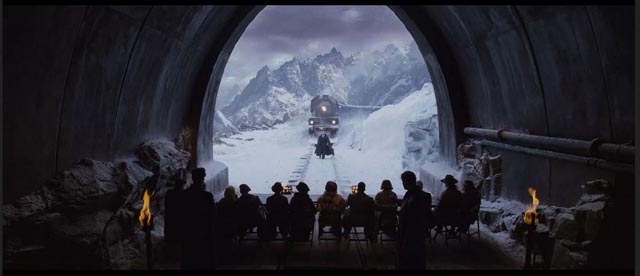
Murder on the Orient Express (Kenneth Branagh, 2017)
Remakes of familiar mysteries seem like an odd undertaking. Who doesn’t already know the solution to the murder of an unpleasant wealthy man on a snowbound train populated with a collection of people all harbouring secrets? Published in 1934, Murder on the Orient Express is one of Agatha Christie’s best-known stories, previously filmed by Sidney Lumet in 1974, with at least two TV adaptations (2001 and 2010). It’s easy to see the chief appeal in the opportunity the story provides for an all-star cast dressed in fine period costumes, not to mention the juicy role of Hercule Poirot, which is ripe for extra large hamminess. Then there’s the romantic setting of the international train with its opulent appointments. But it’s actually not a particularly interesting mystery … especially when you come to it already knowing the solution.
Beyond the production design – enhanced in its newest incarnation with a picturesque CG landscape which gives it a storybook atmosphere – everything depends on the cast as Poirot probes his way to the truth through layers of deception. Branagh (who co-produced and directed as well as starring) throws himself into an at-times cartoonishly mannered performance dominated by a ridiculously exaggerated waxed moustache which frequently overwhelms the dramatic content of scenes. Penelope Cruz, Judi Dench, Johnny Depp, Willem Dafoe, Michelle Pfeiffer, Derek Jacobi, Daisey Ridley and the rest of the cast also mostly go for the mannered effects which are common to non-naturalistic period surroundings. The results are colourful, mildly entertaining … and utterly artificial.
It all looks spectacular on the Fox Blu-ray, which is stacked with extras – a commentary plus deleted scenes and multiple featurettes.
*
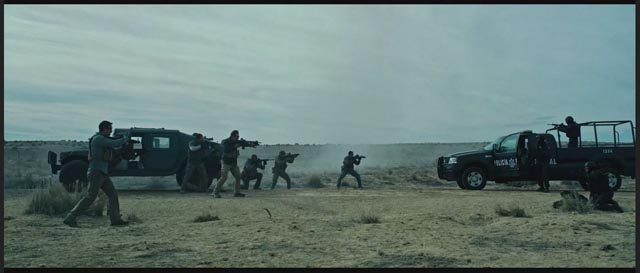
Sicario: Day of the Soldado (Stefano Sollima, 2018)
I didn’t particularly like Sicario (2015), a thriller burdened by Denis Villeneuve’s ponderous self-seriousness, and had read fairly negative things about the sequel, Sicario: Day of the Soldado (2018), written like the original by Taylor Sheridan, but directed by Italian Stefano Sollima. But then it came out that much of Donald Trump’s ranting about the dangers of the Southern border was based on the film’s invented events – the Islamic terrorists infiltrating among Central American asylum seekers, the sinister prayer mats in the desert, the trafficked women with their mouths duct-taped … so I decided to take a look.
Once again U.S. agents are turned loose to take extra-legal action against Mexican drug cartels in a reactionary fantasy which sees the rule of law as a hindrance. A kind of upscaled Dirty Harry view of what’s necessary to maintain American society, even if it involves discarding the supposed core tenets of that society. Agent Matt Graver (Josh Brolin) is told to do whatever is necessary to take down the cartels and embarks on a plan to set them against each other – like Yojimbo and the Man With No Name. Enlisting assassin Alejandro (Benicio Del Toro), he sets out to kidnap the adolescent daughter of one kingpin, making it look as if a rival gang is responsible.
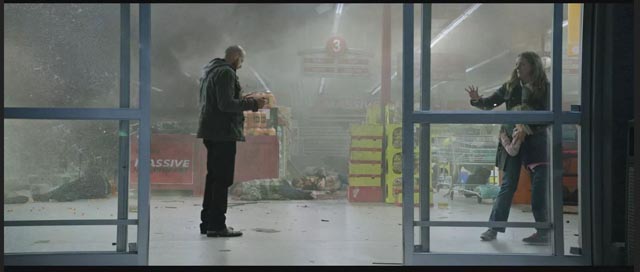
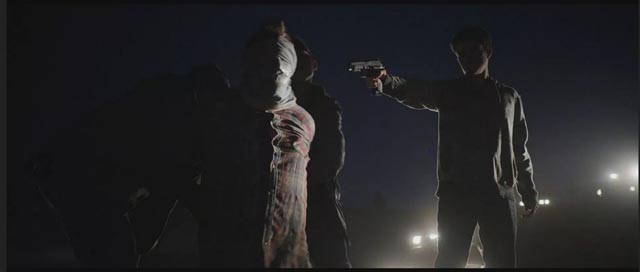
The girl (Isabela Moner) is an arrogant little bitch, already corrupted by her father’s power, but eventually she is softened by a bond which forms between her and Alejandro – leading him, who has been driven by the desire to get revenge for her father killing his own family, to go off mission and protect her when he’s ordered to kill her. The plan remains murky, leading to inexplicable, bloody action set-pieces which justify the title by turning the movie into a war story. Although Alejandro’s transformation seems to call the whole fantasy of cross-border warfare into question, the movie’s gross exaggeration of the situation seems irresponsible in light of the Trump administration’s use of such fantasies to justify the horrors now being inflicted on desperate people trying to escape very real violence in countries to the South, countries whose terrible conditions have been amplified if not created by U.S. foreign policy. And yet the Right accuses Hollywood of being controlled by liberals!
The movie looks appropriately gritty on the Sony Columbia Blu-ray, which includes several featurettes in which the filmmakers try to make you believe this is a serious treatment of real issues.
*
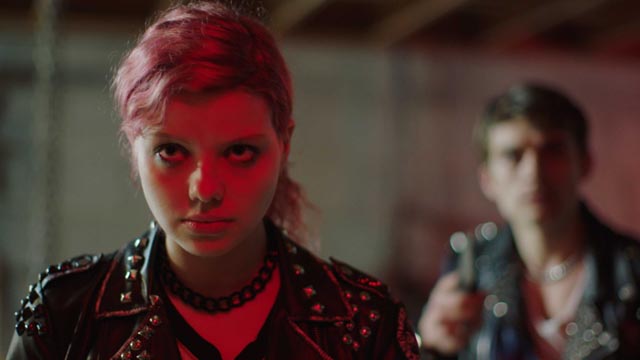
The Ranger (Jenn Wexler, 2018)
It’s almost a relief to turn from the dangerous pretensions of Sicario to the retro thrills of The Ranger (2018), the first feature of writer-director Jenn Wexler, sometime protege of Larry Fessenden. Fessenden shows up briefly in the prologue and occasional flashbacks as the uncle of Chelsea (Chloë Levine as an adult, Jeté Laurence as a child), who sees him die in an apparent accident. Traumatized, the girl is taken in hand by a helpful Forest Ranger, who gives her a sandwich.
Ten years later, Chelsea is hanging out with some punk friends when a police raid leads to a moment of spontaneous violence. The gang flee the city in a graffitied van and head for her uncle’s long-disused cabin. Stopping for snacks along the way, they encounter the Ranger, who immediately dislikes them for their openly expressed contempt for his authority and the environment he’s sworn to protect. Their attitude begins to wear on Chelsea herself once they reach the cabin; this is full of childhood memories and emotional associations, so when they smoke inside, spray-paint the surrounding trees and light fires, she’s torn between being a part of the group and being a responsible adult.
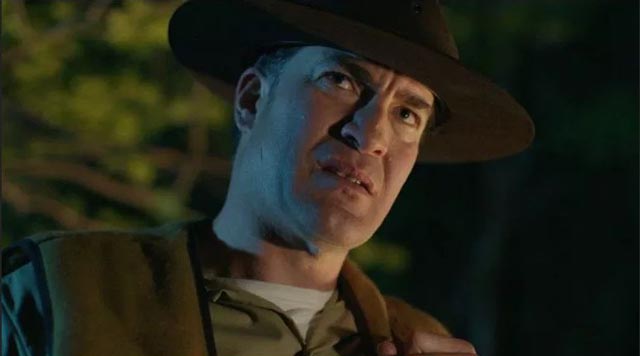
When the Ranger begins to pick the punks off, it’s hard not to sympathize … which reinforces the ’80s slasher vibe where much of the entertainment value derives from wanting to see disposable characters knocked off by the unseen killer. It only gradually emerges that there is a weird connection between Chelsea and the murderous yet cheerful officer of the law who takes the rules and regulations very seriously. The conflict inevitably comes down to the two of them stalking one another, their cat-and-mouse driven by a personal bond rooted in what happened to the uncle, though that event is never completely clarified (did Chelsea herself kill him, or did the Ranger do it because he desired her … and was her uncle taking an inappropriate interest in her himself?).
Wexler gives the movie some style and energy – an exaggerated colour palate supported by a punk-infused soundtrack – but although Chelsea and her friends are well-cast (they are authentically and convincingly obnoxious), Jeremy Holm as the Ranger remains a bit of a cipher, a cartoon villain rather than a genuine menace.
The image on the Black Fawn/Glass Eye Pix Blu-ray reflects the movie’s visual stylization, and the disk includes a commentary and half a dozen featurettes.
*
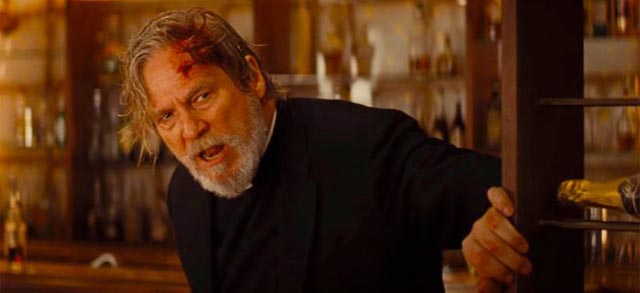
Bad Times at the El Royale (Drew Goddard, 2018)
Is there any significance to the fact that Drew Goddard started out as a writer for Buffy the Vampire Slayer and Angel, then moved on to Alias and Lost? His subsequent work in features seems to reflect both Joss Whedon’s wit and invention and J.J. Abrams’ penchant for teasingly false narrative complexity (withholding information from the viewer for a tediously long time, then failing to deliver on the apparent promises which have been made). All of which makes Goddard’s work superficially clever, but not really as clever as it seems to think it is. The “Godzilla as seen by victims underfoot” idea in Cloverfield (2008) is undermined by the tediously shallow characters at risk of being stomped on. In concept, the Lovecraftian horror of The Cabin in the Woods (2011) is promising, but the vehicle by which it’s delivered so deliberately relies on over-familiar cliches that it feels like a wasted effort. And now in Bad Times at the El Royale (2018), Goddard tries his hand at a tricksy Tarantino-esque multi-character story with fractured timelines folding in on themselves.
Set for no discernible reason in 1969, the movie takes place at a motel which is built on the California-Nevada border (literally – half the rooms are in one state, half in the other). On one particular day, a number of people turn up looking for accommodation, although the place is all but abandoned (there’s only one staff member). As these people sneak about doing mysterious things, there are a whole series of mini-climaxes, after each of which time doubles back and we follow different characters leading to that same moment … each repetition gradually revealing motives and true identities.
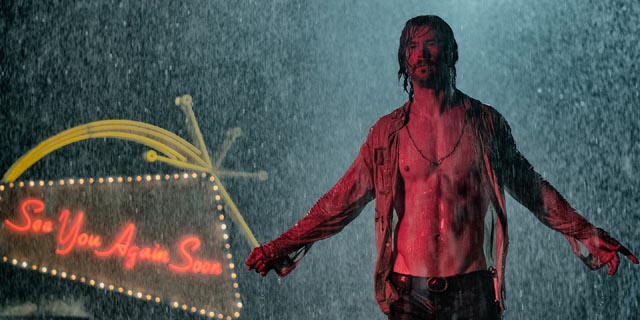
It’s all production-designed to a claustrophobic fare-thee-well (the entire motel was built on a vast soundstage, interior and exterior, so that the camera and cast can prowl uninterrupted through the entire building) and shot in rich fluorescent colours by Seamus McGarvey, but inordinate length (it runs almost two-and-a-half hours) and the layering on of complications on top of complications end up making it ultimately exhausting, the final resolution of all those strands too obvious to warrant all the effort.
The bright colours and flamboyant characters work against any attempt to link the movie to the traditions of film noir, but every character is morally compromised with only a transitory possibility of redemption. The rigging of the whole motel for surveillance – some official, some illicit – suggests that the period setting is supposed to reflect the dawning of ’70s paranoia, which would be fueled a few short years later by the revelations of Watergate. But the movie has little authentic period atmosphere, existing rather in a stylized other reality which is completely self-contained.
The cast (Jeff Bridges, Dakota Johnson, Jon Hamm, Cynthia Erivo, Chris Hemsworth …), portraying archetypes rather than people, are uniformly good, managing to blend with the overall artificial tone Goddard was apparently aiming for. And it does all look quite eye-popping on the Fox Blu-ray. There’s a half-hour featurette on the production which is pretty ghee-whiz about the sheer movie-ness of the whole project.
*
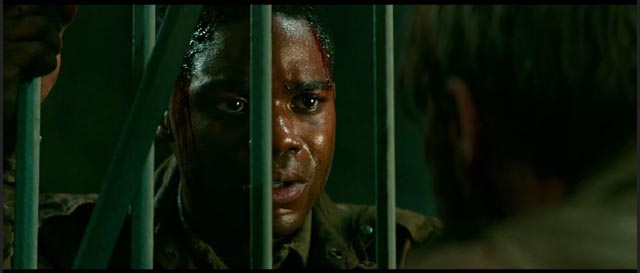
Overlord (Julius Avery, 2018)
Should I be ashamed to admit that I’m partial to Nazi zombie movies? The general idea certainly seems tacky given the real world horrors they evolved from. No doubt it’s the thick aura of death which hangs over the very idea of Nazism which engenders stories in which the regime is perpetuated by the undead. This sub-genre ranges widely in terms of budget and imagination – going all the way back to World War Two with Jean Yarbrough’s King of the Zombies (1941) and Steve Sekely’s Revenge of the Zombies (1943). But the idea of a resurgent Reich using revivified dead soldiers really began with Herbert J. Leder’s The Frozen Dead (1966) and developed with Ken Wiederhorn’s Shock Waves (1977). Jean Rollin (Zombie Lake) and Jess Franco (Oasis of the Zombies) both had a go in 1981, but the modern Nazi zombie really flowered with Steve Barker’s Outpost (2008) and its sequels (2012, 2013) and Tommy Wirkola’s Dead Snow 1 and 2 (2009, 2014). At this point, my favourite movie in the genre is Richard Raaphorst’s Frankenstein’s Army (2013), which despite a few flaws is graced with such an outrageous degree of bonkers invention that it transcends the standard formula.
I’ve sketched this bit of genre history in order to establish the ground from which to assert that, despite what is probably the biggest Nazi zombie budget yet, Julius Avery’s Overlord may well be the worst Nazi zombie movie yet made (and I say that as someone who finds value even in Rollin’s Zombie Lake). The production is slick and, thanks to CG, has a seemingly epic scale, and yet almost nothing in it works. As is often the case, a Nazi scientist is experimenting with a serum to revive dead soldiers to create an invincible army, but the zombies are mostly pushed into the background in order to concentrate on an uninteresting variation of the World War Two platoon movie – a disparate cross-section of society is dropped into dangerous territory where they have to fight an overwhelming enemy while wasting their energy on interpersonal conflicts.
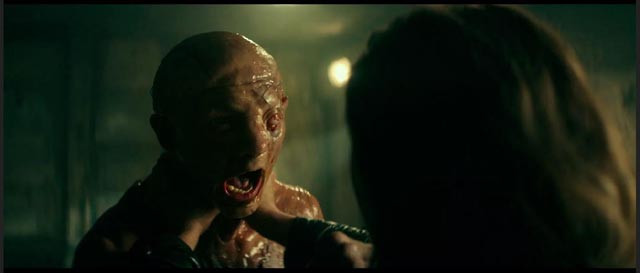
The first thing that puzzled me – and made it difficult to settle into the story – was the ahistorical presence of a young Black private who is quickly established as the movie’s protagonist on the plane flying into German-controlled territory on the eve of D-Day. While this choice reflects contemporary concerns about casting, it’s totally inaccurate historically (U.S. forces were only desegregated in the ’50s under Eisenhower, although the process was started in the late ’40s by Truman). This jarring note (and yes, I’m fully aware that this is a fantasy … but it’s a fantasy which attempts to gain credibility by rooting itself in a particular historical moment) is compounded when it turns out that the officer in charge of the mission is also Black.
Although the private, Boyce (Jovan Adepo), is inexperienced and accused by others in the unit of being a coward, there seems to be no conflict about his race – yet another glaringly ahistorical point. With little respect at the beginning, he earns respect by the end for being the smartest and most able member of the unit. But before that redemption, he goes through quite an ordeal, beginning with the plane being shot down, parachuting through heavy antiaircraft fire, and seeing Germans joking as they kill one of the other men in the woods where they’ve landed.
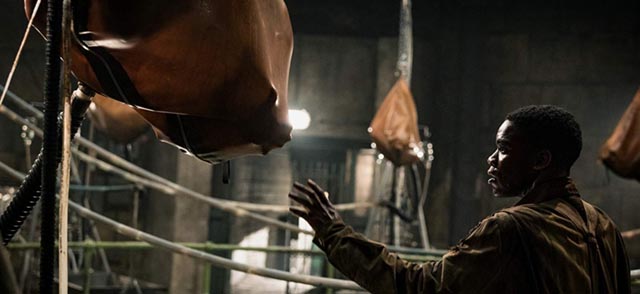
With the few men who survived the jump, Boyce enters the village where they’re tasked with destroying a radio station which could endanger the D-Day landings. They take shelter in the house of a young French woman, whose aunt lurks in a room upstairs, stricken with some sickness inflicted on her by the Germans in their secret laboratory beneath the village church.
In the woods and then in the village, the soldiers make no attempt to keep quiet, talking and yelling at each other – and yet remaining miraculously unheard by the nearby Germans. Avery is apparently unconcerned with the simplest details of plausibility, seemingly viewing each individual scene as an isolated entity unto itself, disconnected from the narrative world the action is supposedly taking place in. This continues as Boyce infiltrates the lab and discovers the nature of the ongoing experiments. It continues as the German commander, who forces himself on the French woman, is taken prisoner in the house and later shot on the street – again attracting little attention.
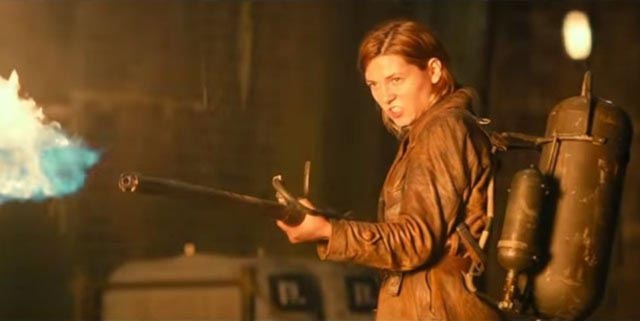
Given the unsatisfactory handling of these plot mechanics it’s even more disappointing that Avery, working from a script by Billy Ray and Mark L. Smith, makes so little of the zombies. They seem to have been grafted on to a routine war story for no particular reason – as if someone had decided that the horrors of D-Day weren’t bad enough in themselves and needed goosing. Overlord doesn’t work as an effective war movie, and it fails even more as a horror movie. In the end it’s hard to know what the original intention might have been, or whether it might have turned out more coherently in the hands of a different director. As it is, it’s a resounding dud.
Hmm … I probably should have known better than to watch yet another movie that J.J. Abrams was involved in.
The image on the Paramount Blu-ray is as good as you’d expect, and there are six making-of featurettes totaling just over fifty minutes.
Comments
When the Last Supper tableau (you use the back side of it at the top of the post) popped up on the screen in Murder On The Orient Express I laughed out loud. It does look good but I kept noticing all the CGI camera tricks.
Have you seen the 2015 Japanese TV adaptation. Someone gave me a download a couple of years ago and I just recently got a DVD from Korea that has the show on two discs. It’s interesting looking and I liked that version of Poirot. They don’t call him Poirot but the plot is the same, at least for the first 2 hour movie. The second 2 hour movie has an original story depicting the back story. It’s set in 1933.
The 2001 TV adaptation with Alfred Molina is fun, he creates a different Poirot. I bought all the Poirot’s with David Sachet on Blu-ray, I enjoyed them on TV and now I can watch nice copies all over again.
The 1974 version with Albert Finney was alright. I just watched it again a couple of weeks ago when I finally got a DVD of it. I had a copy taped off of TCM and it was less than stellar. I’ve been upgrading my Agatha Christie collection and picking up come TV shows I hadn’t had before.
I did like the Outpost and Dead Snow series of zombie movies, I picked them all up on DVD. We try to watch anything with zombies at Friday Night Movie night and Overlord might turn up. I’m not going to go look for it.
I guess I’m not a huge Agatha Christie fan (I did see The Mousetrap live on stage in London in 1972, though). From the movies and TV shows I have seen, her most famous characters – Poirot and Marple – always seem to inspire a particular degree of hamminess from actors. That’s okay when I’m in the mood, but at other times seems irritating …
I would be interested in seeing what the Japanese did with Orient Express, though.
I managed to find the 2-part Japanese TV version of Murder on the Orient Express on-line. Interesting. Part one, which is a fairly conventional retelling of the familiar story, is a bit disappointing. I guess I was expecting a “more Japanese” approach, but it’s pretty much the same as Sidney Lumet’s and Kenneth Branagh’s versions. And Mansai Nomura is as hammy as Albert Finney and Branagh in the detective role – all exaggerated mannerisms and tics, and worse, he keeps going for comedy instead of acute intelligence as he unravels the crime. I almost didn’t watch the second part because going back to fill in the backstory seems really redundant … but much to my surprise, it turned out to be way better than the first part. In fact, here it does “get Japanese” by modelling itself on the famous story of the 47 Ronin. After sketching in the kidnapping and the family tragedy that follows, all those connected with the family – relatives and employees – are gathered together one by one and brought into the plan to get revenge on the kidnapper, a plot which takes several years to piece together with anger gradually undermined by doubt and exhaustion. As in the 47 Ronin, by the time the plan is finally put into action the original emotional impetus has been dissipated and the thirteen conspirators are faced with committing a cold-blooded act of murder rather than a hot-blooded crime of passion. I was really caught up in this new narrative, so when it finally gets back to the aftermath of the murder on the train I was disappointed by the reappearance of the detective, whose overly comic persona undermines the seriousness of the drama.
Lucky for me I enjoy that hamminess in Poirot and Marple. I prefer the Margaret Rutherford films from the 1960s to some of the later TV series. Simply more fun.
I enjoy the adaptations of her novels more than the novels. I read a whole bunch of them 40 years ago and haven’t read any since.
I picked up the French TV adaptations of her novels called Les Petits Meurtres d’Agatha Christie and Agatha Christies Criminal Games. I found them really enjoyable. They came out several years ago and pave been packed into 5 DVD sets. The books have been adapted to new characters. One series is set in 1930s and the other in the 1950s. They look great and usually are fun to watch.
I’d be interested in seeing the French versions, though prices seem to vary wildly. Amazon.ca has a seller offering a copy of volume 4 for $3767.90! (You should put them away for your retirement fund!)